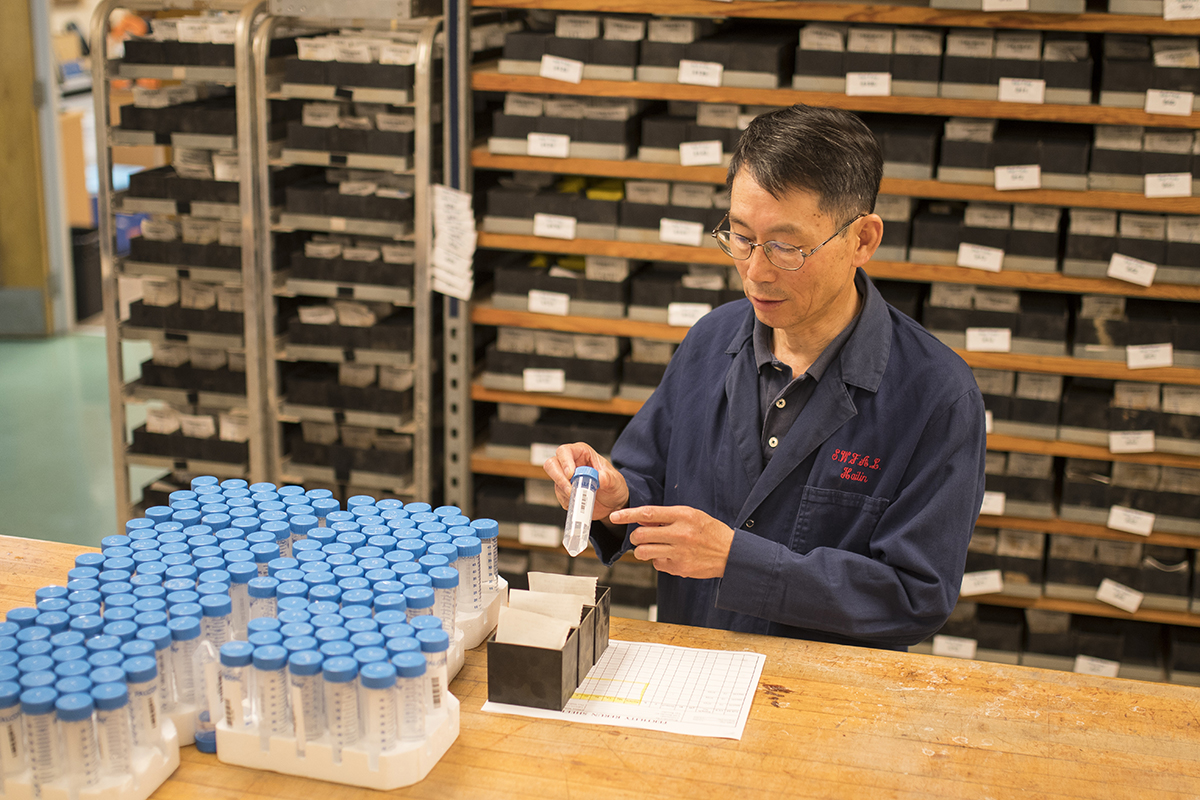OSU Soil, Water and Forage Analytical Laboratory provides key services for both rural and urban settings
Monday, September 10, 2018



It is impossible to provide an accurate fertilizer recommendation without an accurate soil test, and that is why many Oklahomans in rural and urban settings rely on the Oklahoma State University Soil, Water and Forage Analytical Laboratory.
“Urban or rural, it makes no difference where a person lives,” said Hailin Zhang, laboratory director and OSU Cooperative Extension nutrient management specialist. “Soil tests should be a standard management tool for farmers and homeowners alike.”
Fertilizing without soil test data makes farming largely guesswork. Producers do not know what nutrients are needed, nor the amount required to ensure a good crop.
“It is possible to under- or over-apply fertilizer or animal manure,” Zhang said. “This not only costs money, it also means additional nutrients may enter water supplies and cause problems.”
Guessing low also is a problem. Inadequate amounts of fertilizer could reduce yields and decrease profits.
Soil testing also is valuable to homeowners wanting to ensure they have a lush, green lawn or productive garden.
“Homeowners have the same basic challenge as farmers in under- or over-applying fertilizer; too little and the results are not what they desire, too much and runoff occurs, leading to possible environmental problems, which could in turn be costly for an entire community,” said Zhang, an OSU Regents professor who is also holder of the prestigious Arthur L. Reed Endowed Chair in the department of plant and soil sciences. “Of course, if somebody needs more than a soil test done, we can do that as well.”
One-stop shopping
Located in the basement of the north wing of Agriculture Hall on the university’s Stillwater campus, the OSU Soil, Water and Forage Analytical Laboratory was established by the Oklahoma Cooperative Extension Service to provide soil testing, plant, animal waste and water analyses for the state of Oklahoma and anyone who needs agricultural testing services.
“Each year more than 60,000 soil, water, forage and similar samples are submitted for analyses by thousands of farmers, ranchers, homeowners, consultants, governmental agencies and researchers,” Zhang said. “Interpretations and recommendations are made based on many years of field calibrations conducted in Oklahoma. We employ state-of-the-art equipment capable of handling a wide range of analytical tasks.”
Samples for routine analysis are normally analyzed and reported within two to five working days after they are received. Forage nitrate results are reported the next day by email and web, due to the potential for death loss resulting from livestock grazing forages where toxic levels of nitrates exist.
“All results are available for downloading from the internet with user name and password,” Zhang said. “Samples should be submitted through OSU Cooperative Extension county offices or directly to the lab. Extension county office personnel provide sample bags, water bottles, tools and technical assistance for collecting and shipping samples, as well as help interpreting the lab results.”
There is a nominal fee and payment is expected at time of sample drop off. Zhang said the OSU laboratory is not in the business of turning a profit – the small fees charged are only set relative to what the laboratory requires to continue operation – and Oklahomans can employ private laboratories if they wish.
In-depth information on taking specific types of samples is available online at http://soiltesting.okstate.edu/submitting-a-sample. Results of all tests are available only to the client, unless released by client's written notification.
“We value the privacy of our clients,” said Jeff Edwards, head of the OSU department of plant and soil sciences. “Our goal is to make it as easy as possible for producers and landowners to manage their crops, pastures, lawns and property most effectively, matching up economic considerations they might have with good environmental stewardship.”
Biggest bang for the buck
Edwards added the OSU Soil, Water and Forage Analytical Laboratory is a testament to both the business management skill and scientific acumen of Zhang.
“Hailin has been masterful in ensuring available funds are used to enhance the laboratory functions, and as a result we have the latest equipment in a building that has been around for quite a while,” he said.
The main instruments used in the lab include: Two Lachat Flow Injection auto-analyzers, two Spectro ICP spectrometers, two Ankom Fiber analyzers, two LECO TruSpec and one Elementar Carbon and Nitrogen analyzers, one automated pH tester and one auto-titrater.
“Big words for the instrumentation but essentially it means Hailin and his staff can do most any test a producer or homeowner might want to have done, and fairly speedily,” Edwards said. “Not surprisingly, the number of samples tested has increased every year since Hailin took over in 1996.”
The laboratory’s external certification or sample exchange programs include:
- North American Proficiency Testing Program 1994-2007, soil, water and plant sample analyses quarterly;
- Agricultural Laboratory Proficiency Program since 2006, soil, water and plant samples three times per year;
- Manure Analysis Proficiency Program since 2004, three times per year;
- National Forage Testing Association’s Forage Analysis Certification Program, five times per year, with certification being granted every year since 1995; and
- Environmental Resource Associates, water samples six times per year since 2006.
The Oklahoma Cooperative Extension Service is one of two state agencies administered by the OSU Division of Agricultural Sciences and Natural Resources, and is a key part of the university’s state and federally mandated teaching, research and Extension land-grant mission.
